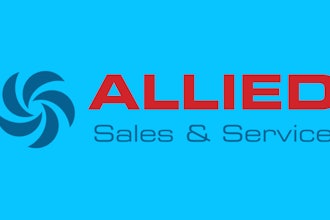While mobile application adoption in traditional industrial corporations has lagged some other industries, many people in manufacturing and distribution today have begun to realize the vast potential mobility has to benefit their organization. Many different types of industrial companies have already “taken the plunge” and enabled their employees to accomplish a wide variety of tasks with the help of mobile applications. For example, sales productivity applications can enable sales reps to access customer and product information with mobile applications that offer a more engaging sales process and speed purchasing decisions. Back at the warehouse and distribution centers, receiving and storage operations can now provide inventory visibility immediately at the dock with the help of mobile devices, providing a real-time look at availability. And in fulfillment, manufacturers and distributors can give their customers the ability to track and trace orders while optimizing their own delivery routes and fleet management. These are just a few examples of the multitude of tasks in which manufacturers across all types of different markets can now accomplish with the help of mobile applications.
For those companies still on the fence about implementing mobility solutions, the options and process can seem a bit daunting. There is the option to build an application in house, buy a solution to develop an app, or hire an external third-party to create it. Within each option lie additional critical decision points and questions to answer –should this application be built for one specific, corporate-issued device, or developed to be used across multiple device platforms? Do native applications, web applications or a mixture of both constitute the best deployment option?
With tough questions like these and when competitors start developing great applications, the temptation for many is to simply “get an app out there.” But similar to any major software deployment, companies must think through these multiple questions and consider the entire lifecycle of that app deployment and put together a mobile app strategy, paying particular attention to the deployment and management of that application. Application development is an important first step, but how applications are distributed to the enterprise or customers is even more crucial, and itis critical that once an application is built and deployed, it can be easily managed, updated, and analyzed. Without this kind of careful planning, ROI will be difficult to achieve. The risk of ignoring these areas of the mobile lifecycle is they risk developing costly apps, which do not provide bottom-line value to organizations and/or are not ready to keep pace with the rapid innovation of mobile platforms and technology. Development for applications is an important first step, but what lies beyond building the applications will unlock the real value of mobile for industrial channels.
Steps For Success
By one estimate, most apps will experience at least four major update cycles from 2012-2014 and 70 percent of all mobile apps created during 2008-2011 will become obsolete, making them candidates for redevelopment. One explanation for this is the intense focus which most organizations place on the front end – designing the look and feel and user experience of the application. This is an important step in the process, but companies also must recognize the backend integration, security and management – which are the parts of the app lifecycle that drive value for an organization over the long-term. Achieving the desired ROI from a mobile deployment means placing as much, if not more, focus on running and managing applications as on building the software.
When developing a mobile application strategy for deploying and managing a given application (or multiple), there are many factors to consider but three of the most important are:
- Integration with existing infrastructure: Accessing crucial information in legacy systems is one of the keys to unlocking the value in mobility – particularly with the complexity of systems in the industrial space. This may seem like a no-brainer, but many companies struggle with how to best support multiple device platforms, manage security, and build applications given the existing (and often proprietary) enterprise software systems they already use. For example, some applications plug into a variety of inventory or order management systems (both proprietary and open/standard) and unify them via a single interface that is present to the user of the mobile application. Choosing a partner or platform with expertise in accomplishing this important step often makes-or-breaks the success of a mobile application deployment.
- Establish an ‘offline’ mode –This is especially crucial for those in industrial distribution that may need to travel to remote locations or have facilities without access to a data connection. By creating an up-to-date database that is stored on the app, mobile devices – including tablets and smartphones – can access information even when the device is not connected to the web. In this mode, the app then updates databases when it has the ability to do so, maximizing the chances that the user is working with relevant data. It also ensures that important data transactions are not lost due to a lack of connectivity, which is important when dealing with integration to other systems.
- Data security: Any application, whether for employees or customers, is going to contain a variety of sensitive information. Just like a manufacturer would secure traffic over the network, information needs to be encrypted on the device and sensitive data that is being cached on the device must also be securely handled. This kind of security is now routinely demanded by corporate IT departments, and it mitigates the risks associated with software and hardware designed for use away from company premises.
Bringing It Together
Bringing all these pieces together – development, deployment and management – in the mobile application lifecycle is no small task. It requires a carefully laid out strategy, action plan and the expertise in all phases to execute effectively.
An example of how this can be done can be found within a large hydraulics manufacturer, Eaton, which recently deployed a new iPad catalogue app for sales productivity. The app takes advantage of the tablet’s potential as a demonstration device (given the iPad’s high resolution display) to visualize existing parts, rather than simply conveying their specifications. The application allows salespeople for the company and its distributors to look up products from a digital database made up of the more than 200,000 items previously found only in a stack of 15-20 ink and paper catalogues. Sales executives can now find out whether a given product is in stock at any given time, how it is priced and what it actually looks like – leveraging a 3D modeling and CAD engine. The database is constantly maintained, with updates incorporated in real-time, meaning that users of the app are always able to find out what is and isn’t available as well as what changes products may have undergone. When orders are placed sales people working with the app are able to order parts directly and securely via the company’s order processing system. Salespeople/customers have also created parts using the application’s BOM (Bill of Materials) builder, and request them from the bottom of the supply chain. The app’s visualization capabilities also make it easy for the company’s salespeople to ‘cross-sell’ customers on appropriate alternative parts, should whatever they originally selected be out of stock. The app also features competitive pricing, and informational videos – making the sales process more engaging. All of this optimizes the management and utilization of stock, and further streamlines the supply chain.
As industrial companies move closer to embracing mobility, there is potential temptation to get things done quickly and overlook crucial elements of a deployment until after the app is deployed. However, by addressing these areas early in the planning stage of a deployment, companies can achieve the ROI and long-term value they desire with mobile applications.






















